Top 20 Most Popular New Year Meals Around the World
 |
| Photo: dw.com |
| Table of Contents |
While New Year's Eve is typically associated with festivities and champagne, New Year's Day is mostly dedicated to gathering with family and indulging in dishes believed to bring good fortune. Several nations have cultural customs in which they consume specific meals on New Year's Day to ensure a propitious start to the year.
If you have ever pondered the reasons behind people's consumption of specific meals on January 1st, get prepared to receive some explanations.
Top 20 Most Popular New Year's Day Foods In The World
1. Hoppin' John
Hoppin' John is a prominent culinary custom in the American South at New Year's. It consists of pork-infused field peas or black-eyed peas, which symbolize coins, combined with rice. This dish is sometimes accompanied by collards or other cooked greens, as they represent the hue of money, and cornbread, which resembles the color of gold. According to tradition, consuming this dish is said to bestow good fortune in the upcoming year.
The origins of this meal can be traced back to African and West Indian customs, and it is believed to have been introduced to North America by enslaved individuals. The recipe for Hoppin' John was first documented in 1847 by Sarah Rutledge in her book "The Carolina Housewife" and has since been modified by both amateur and professional cooks throughout the years.
 Guide to Make Hoppin' John - American South's Traditional Dish for New Year Guide to Make Hoppin' John - American South's Traditional Dish for New Year |
2. Noodles
 |
| Photo: asianinspirations.com.au |
Countries such as China, Vietnam, and Japan consider long noodles to symbolize longevity. Many individuals are currently seeking a hidden method to extend their lifespan. Perhaps the solution lies in consuming elongated noodles alongside our New Year's Day meals. Supposedly, there is a correlation between the length of a noodle and the length of one's life. However, there is one condition: You must refrain from breaking the noodle until it is completely within your mouth.
3. Fish
"Fish" (鱼 Yú, /yoo/) sounds like "surplus" in Chinese. One of the typical dishes served during Chinese New Year dinner is fish. Chinese people always enjoy having more money at the end of the year because they believe that if they have saved something, they will be able to earn more the following year.
If worded in a certain way, eating two fish—one on New Year's Eve and one on New Year's Day—sounds like a desire for an abundance every year. Speaking of eating half of a catfish on New Year's Eve and the remaining half on the first day of the new year might have the same homophonic meaning if only one catfish is consumed.
4. Twelve Grapes
 |
| Photo: shropshirestar.com |
Twelve grapes are used to greet the new year in Spain. The tradition is said to have started at the turn of the 20th century by southern Californian grape growers who had an abundance of grapes. The custom has since extended to several Spanish-speaking countries.
A peculiar yearly custom is observed by those in the square and those observing from home: they eat one grape for each chime of the clock at midnight. Some even prepare their grapes by seeding and peeling them in order to maximize their productivity come midnight.
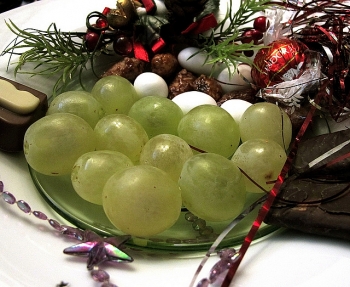 Eating 12 Grapes at Midnight - World's Weirdest Traditions Eating 12 Grapes at Midnight - World's Weirdest Traditions Eating 12 grapes at midnight on New Year’s Eve is both a tradition and a superstition in Spain. There are some stories behind this ... |
5. Cabbage
Because of its resemblance to money in color, cabbage is linked to good fortune and luck in Germany, Ireland, and some portions of the United States. But purple cabbage is purely decorative. There's usually some kind of cabbage, or sauerkraut, right next to the pork. This custom, which originated in Germany and Eastern Europe as well, is similarly based on straightforward logistics: With a late fall harvest and a fermentation period of six to eight weeks, sauerkraut is nearly ready for New Year's.
However, cabbage is also deeply symbolic on New Year's Eve; apart from its potential to represent money, cabbage can also represent long life when used in sauerkraut or coleslaw. Try this caraway-infused sauerkraut for a classy twist.
6. Chinese Dumplings
 |
| Photo: eastwestbank.com |
Over 1,800 years in history, dumplings, also known as 饺子 JiŎozi (/jyaoww-dzrr/), are a traditional Chinese New Year's Eve dish that is highly popular throughout the country, particularly in North China.
It is possible to fashion Chinese dumplings to resemble Chinese silver ingots, which are oval boats with pointed ends rather than bars. There is a legend that states you can make more money in the new year if you eat more dumplings during the festivities.
7. Cornbread
People in the South eat cornbread because it represents gold in color. I love bread in general, so if consuming cornbread increases my chances of striking it lucky later in the year, I'm all for it. To make a fortune this year, combine a few different New Year's Eve culinary traditions, such as cornbread, greens, and black-eyed peas. "Peas for pennies, greens for dollars, and cornbread for gold," as the Southern proverb puts it.
8. Yaksik (Korean sweet rice with dried fruits and nuts)
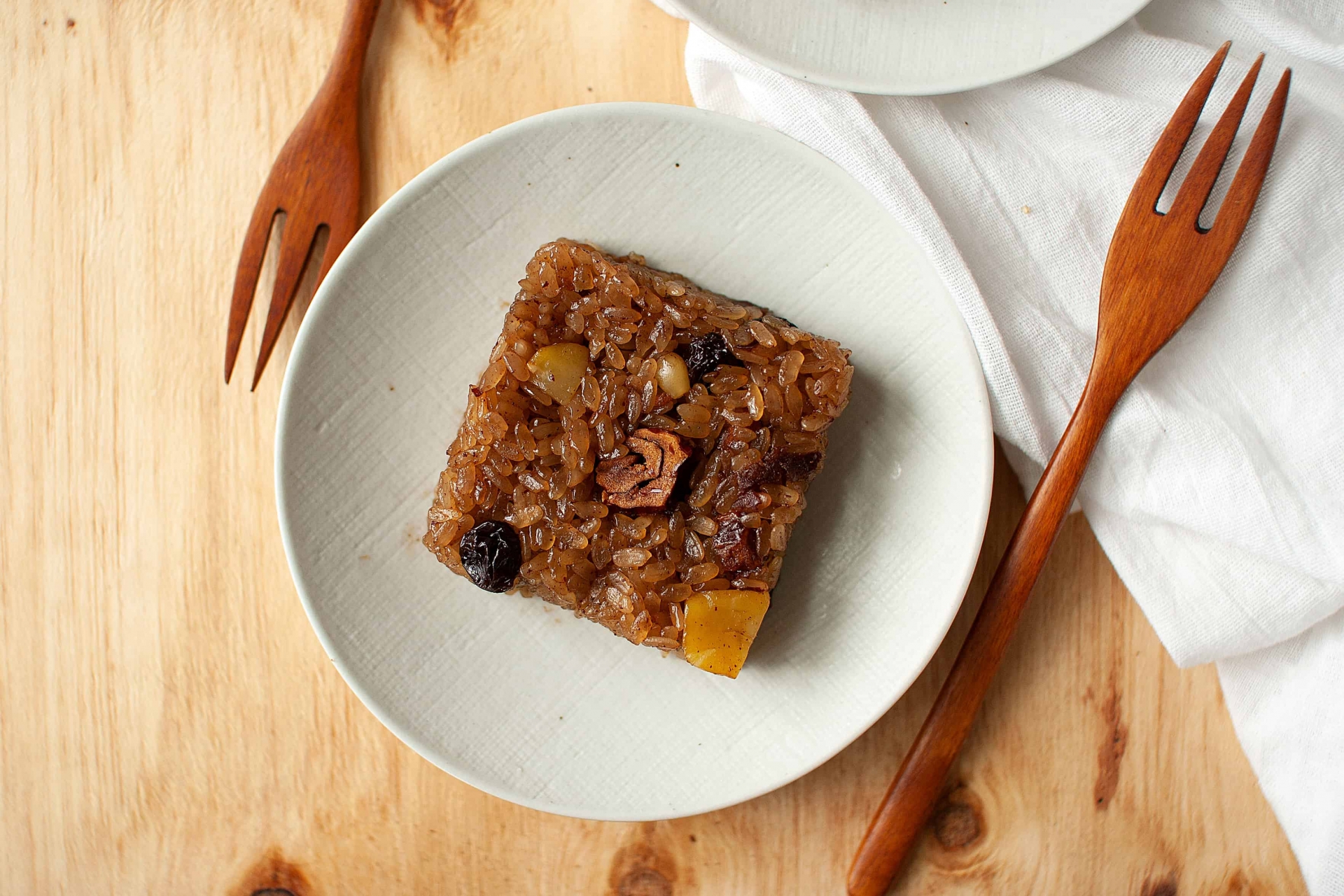 |
| Photo: jessicasdinnerparty.com |
Yaksik translates to "medical food." One of the main ingredients is honey, which was once thought to be medicinal in Korea.
Yaksik has a sticky texture and a moderate sweetness. Nevertheless, it's a well-liked Korean dessert that's frequently offered on special occasions like 60th birthdays, weddings, and new year's day.
9. Pork
Once considered a delicacy for the affluent, pork now represents wealth and success. A traditional dish for New Year's Day, pork stands for advancement and prosperity. Eating pork is supposed to make someone chunky, not because of weight gain, but because pigs are known to be plump. Considering that pigs "root forward" when they eat, pork can also advance society. On January 1st, fill up with a substantial dinner of pork to set high goals for this year.
10. Ozouni (Mochi soup)
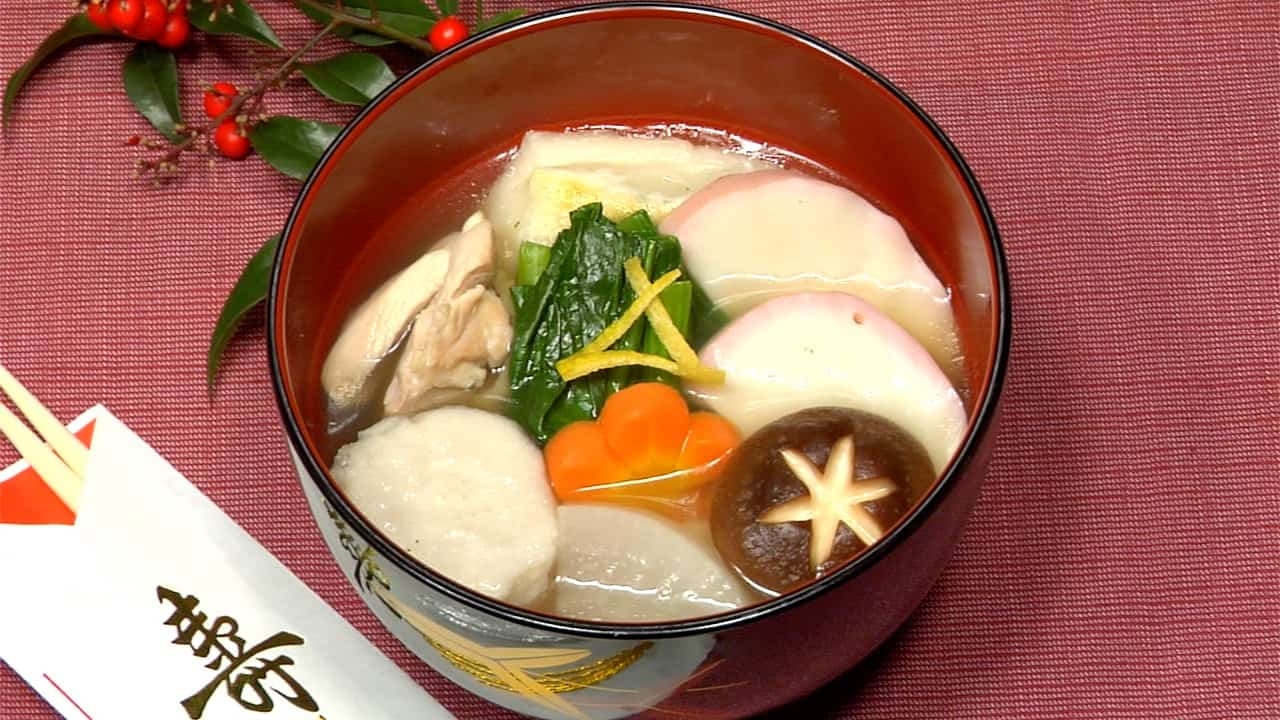 |
| Photo: cookingwithdog.com |
Mochi soup for the Japanese New Year is called ozoni お雑煮. On New Year's Day, Japanese people traditionally eat this soup. Zouni (雑煴), also called Ozouni (with the honorific "o"), is a Japanese soup for the New Year that contains mochi, or rice cakes, and is frequently connected to the custom of osechi ceremonial foods. Mochi is a symbol of longevity because it is flexible and can be pulled long. Add local produce and hope for an abundant harvest in the coming year. In Japanese, chicken (called Tori, but pronounced "natori") is a symbol for succeeding and moving ahead of others.
11. Greens
Since collard greens are a late crop, primarily produced in the South, they are readily available during the winter. Because of their color and appearance, which resembles paper money, people eat green leafy vegetables—such as kale, collards, and cabbage—on New Year's Day all over the world, from the coastal South of America to Europe. According to popular belief, eating more food will make you healthier and more prosperous.
12. Tamales, Mexico
 |
| Photo: houstoniamag.com |
In Mexico, tamales are especially popular around the holidays. In Mexico, tamales—baked corn dough filled with cheese, meat, and other delectable ingredients and wrapped in a corn husk or banana leaf—appear at almost every festive occasion. However, the food is especially popular during the holidays.
Hundreds of these little packets are made by groups of women in many families, each taking charge of a different part of the cooking process, and then distributed to friends, neighbors, and family. It is typically served with menudo, a tripe and hominy soup that is well-known for curing hangovers, on New Year's Eve.
13. Black-Eyed Peas
A long-standing custom on New Year's Day is to eat black-eyed peas. They are connected to luck on New Year's Day for several different reasons. According to one theory, the tradition dates back to the Civil War, when Union soldiers stole food supplies from the Confederate army and left only this bean behind. Another is rooted in African American history, with freshly freed slaves celebrating the Emancipation Proclamation in January 1863 by serving black-eyed pea dishes, one of the few foods that slaves could afford.
However, other theories trace the lucky reputation of the legume all the way back to ancient Egypt, where it was believed that eating the pea, a vegetable easily accessible to even the most impoverished slaves, was a sign of humility offered to the gods.
14. Spring Rolls
 |
| Photo: joyceofcooking.com |
The reason for the name "spring rolls," (春卷 Chūnju̎n, /chwnn- jwen/), is that they are typically consumed during the Spring Festival. A popular Chinese New Year dish in East China, including Jiangxi, Jiangsu, Shanghai, Fujian, Guangzhou, Shenzhen, Hong Kong, and so on, is this one.
Cantonese dim sum cuisine features cylindrical rolls called spring rolls that are stuffed with meat, vegetables, or sweet ingredients. The spring rolls get their golden-yellow color from frying the fillings wrapped in thin dough wrappers.
15. Round Fruits
Eating any round fruit is a common New Year's tradition, though the quantity varies by region. Thirteen is considered a lucky number in the Philippines; twelve is associated with the months of the year in Europe and the United States. The common denominators in both cases are their coin-like shape and their sweetness.
Pomegranates, a symbol of fertility and birth, are consumed at the start of the year worldwide, and grapes are consumed in Mexico at midnight to represent the coming year. A sophisticated way to get the New Year started right is with a cocktail that has pomegranate as its base.
16. King Cake
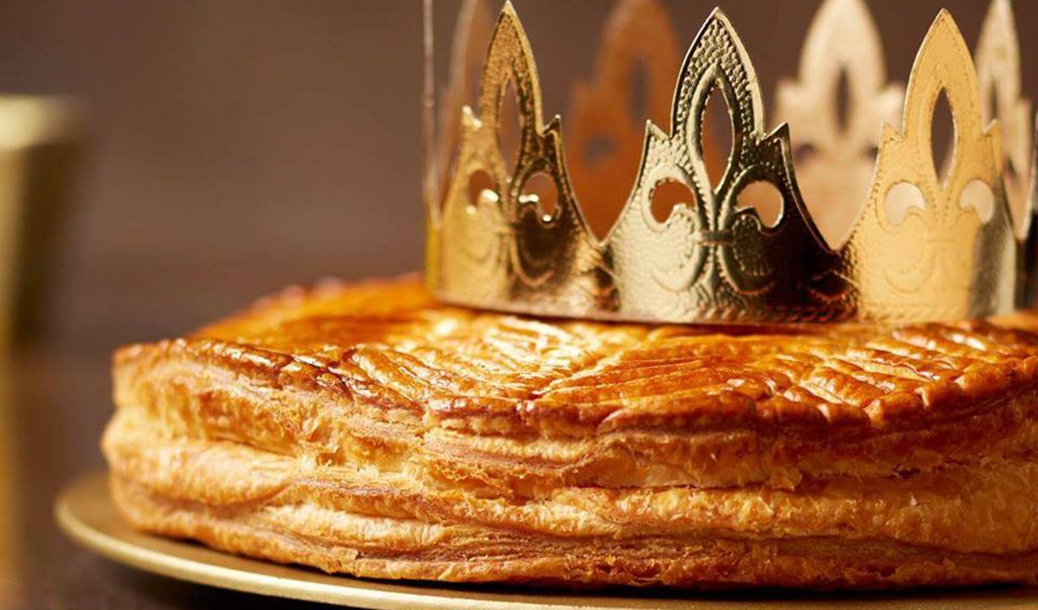 |
| Photo: annam-gourmet.com |
A New Year's cake is a custom shared by many different cultures. The French call their gateau or galette des rois, while the Greeks have the Vasilopita. Bulgarians enjoy the banitsa, while Mexicans celebrate Rosca de Reyes.
The majority of cakes are eaten at midnight on New Year's Eve, though some cultures cut their cake on Christmas or the Epiphany, January 6. Some cakes have a hidden gold coin or figure inside, which, for the person who finds it in their slice, represents a prosperous year.
17. Sweet Rice Balls — Family Togetherness
The main dish for China's Lantern Festival is sweet rice balls (汤圆 Tāngyuán, /tung-ywen/); however, in south China, people eat them all year round during the Spring Festival. Tangyuan's round shape and pronunciation are connected to getting together and having a reunion. For this reason, during the New Year's festivities, the Chinese give them preference.
18. Lentils
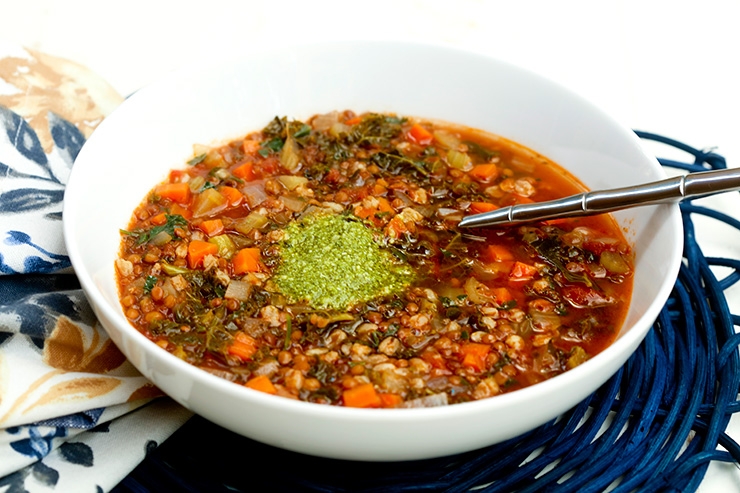 |
| Photo: italianfoodforever.com |
Lentils are believed to resemble coins and are consumed on New Year's Day throughout Italy as a means of bringing good fortune for the coming year. Because lentils resemble coins and thus are symbolic of luck and prosperity, Italians eat lentils on New Year's Day. Try eating some lentils to help you locate the "X" on your treasure map in the hopes of discovering a treasure chest full of gold the following year.
19. Circle-Shaped Foods
Circular foods like donuts and bagels represent the year coming full circle. This makes sense because you have to end one year before starting another. If you want a final ending to this year, try eating a donut before your New Year's celebrations.
20. Oliebollen, Netherlands
 |
| Photo: timeanddate.com |
Fried oil balls, or oliebollen, are typically consumed on New Year's Eve and at special celebration fairs in the Netherlands. They are sold by street carts. Made by dropping a scoop of dough spiked with raisins or currants into a deep fryer and then dusting it with powdered sugar, these dumplings resemble doughnuts.
Look out for Oliebollenkraams (small, makeshift shacks or trailers on the street selling packets of hot, fried oliebollen) when visiting Amsterdam.
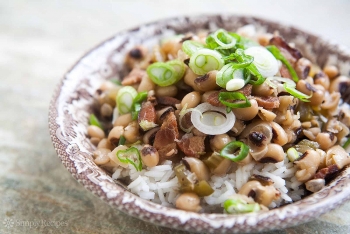 Top foods to eat during New Year in the US Top foods to eat during New Year in the US New Year is coming up quickly. At KnowInsider, we provide some of the dishes for your next New Year's Eve party to bring luck to ... |
 Top 19 Ideal Foods for Picnic Time Top 19 Ideal Foods for Picnic Time Is there anything better than enjoying a feast in the great outdoors? We’ve pulled together our best ever picnic food for everyone to enjoy, from ... |
 Top 5 Delicious Foods You Must Try in New York Top 5 Delicious Foods You Must Try in New York One of the most wonderful things about New York City is the diversity of the people; And there’s no better way to experience New York ... |


























